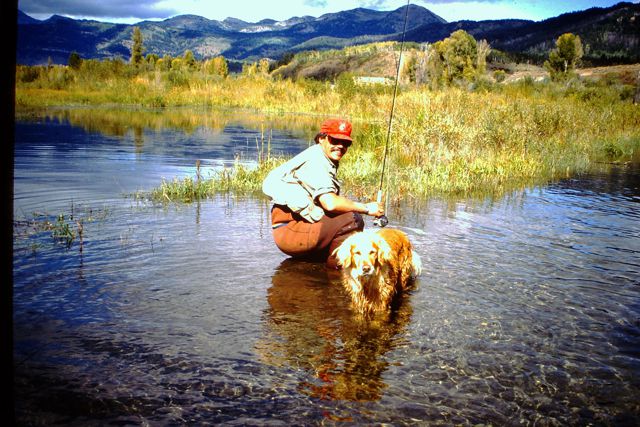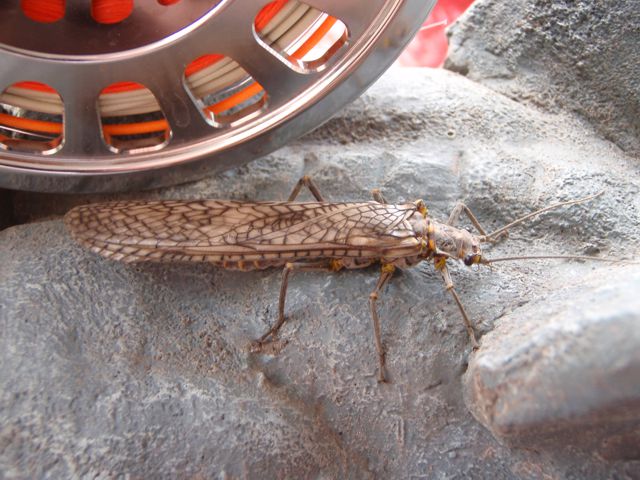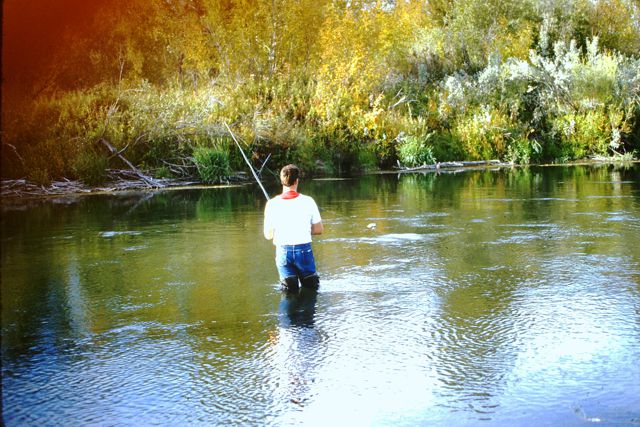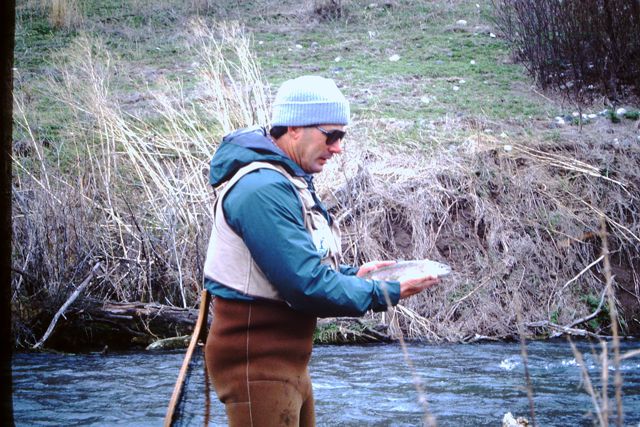Of all the time I spend fly fishing, fall is by far my favourite season for many reasons. Once the kids go back to school in September the streams, rivers and lakes become less crowded, allowing you to fish your favourite spots with little or no competition from other anglers. Water temperatures drop and the fish get active and start feeding in anticipation of the on coming winter. Trout in lakes and ponds that have been sulking through the summer doldrums are reinvigorated by cooler water temperatures. Brown, Bull and Brook trout are all fall spawners and are very aggressive at this time of the year, and are also at their most colourful, in my mind there is nothing prettier than a fall caught brown trout. While it may seem like catching trout in the fall should be easier, it is often not the case. These fish have been fished for all season long, fish that were easy at the start of the year are now at their wariest. Let me share with you of few tips and tricks I use in the fall which often produce fish.

Fall is a great time of year to be out fly fishing.
Even though the insect hatches that garner all the attention, Stoneflies, March Browns, Green Drakes, PMDs' etc. are all finished hatching for the year there is still plenty for trout to eat come the fall. In Alberta the fall fly fisher can count on hatches of Blue Winged Olives, Tricos, Midges and Caddisflies amongst others. For the most part insects that hatch in the fall will be smaller than the spring and summer hatches, Blue Winged Olives are usually a size 18 or 20, and will often hatch well into October, Tricos the same, sometimes even smaller. A couple of saving graces are the October or Fall Caddis which is size 6 or 8, and terrestrials, such as ants and beetles which are always available. I fish ants all year long and I have a saying, "They'll always eat an ant". Even grasshoppers will be available up until a hard frost puts an end to them. Nymphs and streamers work all year long, because the naturals are always in the river, at various stages of their development.

The large bugs of spring and summer are mostly gone come the fall.
With most of the insects hatching being of smaller sizes in the fall the dry fly angler is challenged with not only having to make a delicate presentation but also to be able to see where in the heck his fly is. I have a couple of tricks that I use to be able to track my fly, something that becomes harder every year. The first method is to use a small indicator of yarn a foot or so from your fly, this way even if you can't see your fly, if a fish rises within a foot of your indicator set the hook. I like to use a white yarn as I find I can spot it quite well and it also looks like a foam bubble on the surface, which is quite natural. You can also use a larger sized dry fly as an indicator, a size 14 or 16 parachute Adams works well and will also catch the odd fish. The above mentioned Fall Caddis and grasshoppers can be used to fish either a two dry rig or a dry-dropper rig, using the larger dry as an indicator for either a smaller dry or a nymph.
When fishing streamers in the fall I like to use a very active presentation, hitting the water hard and using a very quick retrieve. Trout are very aggressive at this time of year and will go out of their way to show any intruders whose boss. Running your streamer anywhere near their territory will usually draw a strike. Many anglers will only fish a single streamer but I almost always use two. A lighter coloured fly ahead of a larger, darker coloured fly on the point gives the illusion that the darker is chasing the smaller lighter fly, often agitating the trout to join in the chase and try and eat them both! When fishing double streamers I always tie the point fly on with about one foot of mono to the bend of the other fly, this way everything is inline and it casts and swims smoothly. The top hook doesn't seem to lose its' ability to hook fish as the takes are usually very aggressive.

Streamers can produce some large fish in the fall.
While conditions would seem to favour the angler at this time of year that's not necessarily the case. The angler must remember that with the sun being lower in the sky their shadow will be longer and spooking the fish with your shadow in low clear water can be a problem. When the situation allows I like to use a longer leader, 12 or 15 feet instead of my usual 9 feet. Increasing the distance between you and the fish can help reduce the spooking. Also I like to use a lighter rod if possible which gives a gentler presentation with its' lighter line. Clothing colour should also be considered, save the Chartreuse and Hot Orange shirts for the winter salt water trips and stick with drab colours such as Olive and Pewter etc.
Water temperature plays a large part in trout fishing and more anglers should pay attention to it. In the summer months we get used to fishing early and late, but in the fall, mid day, once the water warms up, is when you will see the most action. Also don't shy away from the cold, drizzly days that fall can bring, the hatches and fishing can be fantastic. It's no secret that Blue Winged Olive, which hatch in Alberta in September and October hatch in great numbers on cooler days. The weather causes them to take longer to dry their wings after emerging, making them an easy target for feeding trout. Hatching bugs and feeding fish will soon make you forget about the miserable weather.

The scenery can be spectacular in the fall.
Safety, while always important doing outdoor activities, is paramount in the fall. Always fish with a partner, with fewer people afield help could be a long time coming if you’re alone and you have an accident. Fall is also hunting season so if you are in an area where there is hunting forego the above mentioned drab colours and where something bright, even if it's just your hat. Wade carefully and always wear a wading belt, while streams are lower and slower at this time of year the water is very cold and taking a dip can be very dangerous. Use a wading staff for support when crossing streams even if you are a confident wader. Dress for the season, layers under your waders, a good waterproof wading jacket, a toque or beanie and some fingerless gloves will add to your comfort. Remember the old adage that you can always take layers off if you get too hot, but you can't put them on if you don't have them. Bear spray and being bear alert is also of extreme importance, they are very busy at this time of year fattening up for the winter. Hopefully these tips and tricks will help you enjoy some fall flyfishing this year, and as always take the time to stop and look around, the scenery can be spectacular at this time of year.

Dress for the weather and fall fishing can be very rewarding.


